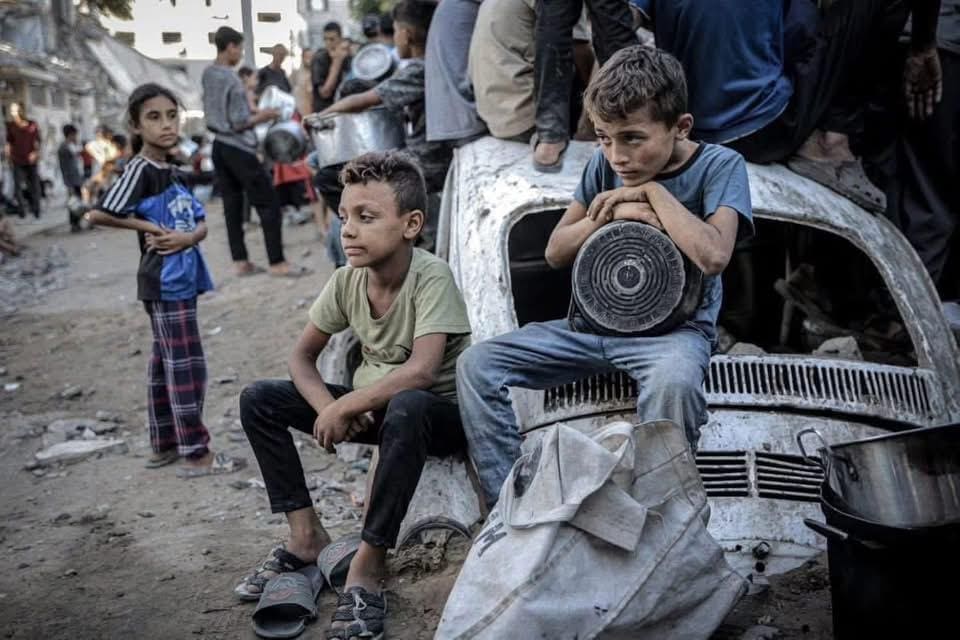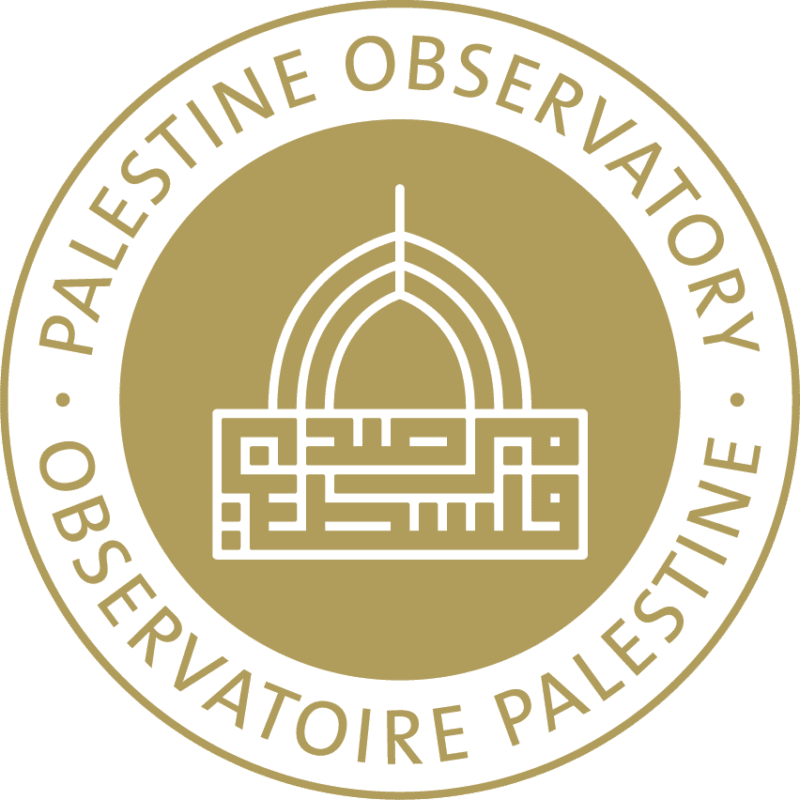
Israeli occupation forces continue to commit massacres against Palestinians in the Gaza Strip, which has witnessed violent bombardment and deliberate demolition of residential towers and buildings throughout the past week, resulting in an unprecedented rise in the number of casualties and injuries. Tens of thousands of civilians remain trapped in their homes, unable to flee due to the heavy, indiscriminate bombing targeting densely populated residential neighborhoods. According to the Organization of Islamic Cooperation’s Observatory on Israeli Crimes Against Palestinians, between September 23 and 29, 2025, Israeli occupation forces murdered more than 716 Palestinians and wounded 1,593 others in air and artillery strikes and direct fire, as part of the ongoing war of genocide that began on October 7, 2023.
The Israeli raids targeted inhabited homes and gatherings of civilians waiting for humanitarian aid, bringing the death toll since the start of the aggression to 67,102 Palestinians murdered and more than 177,474 wounded. One of the most notable attacks was the bombing of the Makkah residential tower in the southern Al-Rimal neighborhood of Gaza City, after a last-minute warning to residents. It housed hundreds of displaced Palestinian families, while tents sheltering dozens of other families were scattered around it, exacerbating the humanitarian disaster. In recent weeks, the occupation forces have blown up dozens of towers and hundreds of residential buildings throughout the Gaza City in a policy that international organizations have described as aimed at forcibly displacing Palestinians and emptying the city of its inhabitants.
In the health sector, the Israeli occupation army continued to target the vicinity of the Al-Shifa Medical Complex and prevent access to it, hindering the arrival of ambulances and the wounded, in an attempt to encircle the area and force the population to flee. The occupation also intensified its bombardment of the Shati refugee camp west of Gaza City, using airstrikes and booby-trapped vehicles, resulting in massacres of civilians, including women and children. The OIC’s media observatory recorded dozens of injuries and deaths among aid seekers as a result of being shot while lining up for aid, at a time when malnutrition continued to claim the lives of civilians, with the total collapse of the health sector.
The United Nations Office for the Coordination of Humanitarian Affairs confirmed that air strikes had increased to an average of one strike every eight to nine minutes, and that field crews had documented bombardments by warplanes, helicopters, and drones, as well as direct fire on civilians waiting for aid. Amid this aggression, mass displacement from northern and central Gaza City to the south continued, but the situation there is described as dire and unlivable, while hundreds of thousands remained trapped inside the city with no safe passage.
The World Health Organization reported that four hospitals in the north of the Strip have been closed since the beginning of September due to bombing and evacuation orders, while hundreds of health facilities are out of service. More than 15,000 wounded people are in need of urgent medical evacuation, but the process is proceeding very slowly. According to the Organization of Islamic Cooperation Observatory, the health sector in Gaza is on its last legs, with a crippling fuel crisis threatening to shut down the remaining hospitals.
On the technological front, the head of Microsoft revealed that the Israeli army used the company’s services to store civilian phone call data obtained through extensive surveillance of Palestinians in Gaza and the West Bank. He confirmed that the company had informed the Israeli Ministry of Defense to stop and suspend some of the services that were exploited for these purposes.
Meanwhile, the Global Solidarity Fleet continues its journey toward the Gaza Strip in an attempt to break the blockade. It announced on Sunday that it is now within kilometers of the Strip and has been attacked by drones believed to have been launched by Israel, causing explosions and communication outages. Despite this, more than 50 boats carrying 500 activists from 45 countries, including prominent doctors and human rights activists, continued to advance towards Gaza. Italy and Spain announced that they would send naval ships to escort the flotilla and ensure its arrival after these attacks.
In the occupied West Bank, including East Al-Quds, the week of September 23-29, 2025, saw a dangerous escalation due to attacks by Israeli occupation forces and settlers. A large number of Palestinians were injured in separate attacks involving gunfire and deliberate ramming north of Nablus, where a young man was run over near the village of Al-Luban Al-Sharqiya, while another was taken to the Istishari Hospital in Ramallah with serious injuries after a second ramming incident near the entrance. Palestinian cars were also attacked with stones by settlers near the Yitzhar settlement, causing serious damage to a number of vehicles.
In East Al-Quds, settlers stormed the town of Silwan, south of Al-Aqsa Mosque, and, with the support of the occupation forces, uprooted olive trees from Palestinian land in the Wadi Rababa neighborhood. A new settlement outpost was established on land belonging to the town of Deir Istiya, northwest of Salfit, where settlers erected tents on an area of 44 dunams.
Settlers also attacked a Bedouin community in the town of Makhmas, northeast of Al-Quds, and raided the Khallet al-Sidra community, where they prevented residents from using the only road leading to the community and cut electricity cables, causing a power outage. According to the Wall and Settlement Authority, Israeli settler terrorism has so far caused the displacement of more than 30 Bedouin communities comprising 323 families, the latest being the Maghayir al-Deir community east of Ramallah.
In Jabal al-Baba, southeast of Al-Quds, some 450 Palestinian Bedouins face the threat of forced displacement once again, after the occupation authorities approved a settlement plan known as E1, which threatens to separate the north of the West Bank from the south and prevent the establishment of a contiguous Palestinian state.
In Hebron, settler groups continued their attacks, storming Palestinian land in the village of Amrich in the Khallet al-Silsil area and erecting occupation flags and mobile homes. They also attacked land in Masafar Yatta, vandalizing water tanks, destroying fodder, and stealing property. In the Old City of Hebron, occupation forces prevented students from Ziad Jaber School from attending classes after imposing a curfew.
The West Bank also witnessed attacks by settlers grazing their sheep on Palestinian olive groves in Bethlehem, as well as widespread arrests of 17 citizens from the village of Kafr Laqif near Qalqilya, raids on homes, and destruction of property. This coincided with the Knesset’s approval of a bill to “execute Palestinian prisoners” in its first reading, which is the most serious manifestation of the Israeli occupation’s efforts to give “legal legitimacy” to its policies of extrajudicial killings.
These developments confirm that the West Bank is witnessing its worst displacement and displacement crisis since 1967, with UNRWA announcing that more than 42,000 citizens have been forced to leave their homes this year.
In Al-Quds, settlers stormed Al-Aqsa Mosque throughout the week under the protection of the occupation police in successive groups, carrying out provocative tours and performing Talmudic rituals in its courtyards, while the occupation authorities imposed six-month expulsion orders on the preacher of Al-Aqsa Mosque and a number of Al-Quds residents. The occupation forces also closed the Ibrahimi Mosque to Palestinians and prevented them from praying inside, under the pretext of enabling settlers to perform religious rituals inside.
